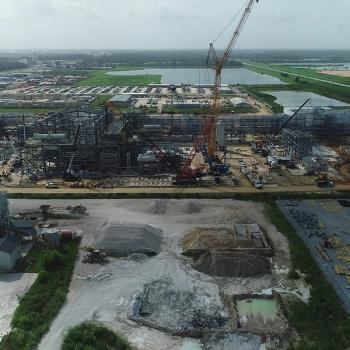
France picks GE for Alstom partnership
Following an interesting corporate battle involving business interests, energy security and national interest, GE was finally able to persuade the French government to incline in its favor. But the government has made some more demands from GE, and the final shape of things is yet to come. The Alstom board is expected to meet on Monday to decide on the deal.
The endorsement seems only a formality since the board has so far indicated its preference for GE. French Economy Minister Arnaud Montebourg said France has demanded strict conditions “guaranteeing energy independence, job creation on national territory, and maintenance of decision-making centers in France”.
The French government rejected a rival bid by Siemens and Mitsubishi, which were largely made to prevent GE gaining an upper hand in the global power business. In the end, the Siemens-Mitsubishi offer became a valuable bargaining chip for the French government to force GE to change its terms from an outright purchase to a partnership model in which the French government will have a significant role, such as a 20 percent stake.
Siemens, Mitsubishi jump in
The GE bid that came first was considered in the market as a more natural offer. Siemens soon jumped in, and promised a more refined bid later. Along the way, Siemens roped in its rival in the large gas turbines business, Mitsubishi, to propose a joint offer. At one stage, it appeared that Hitachi would also be part of this offer.
The Siemens-Mitsubishi deal was more in the nature of partnerships. While Siemens would take over the lucrative gas turbine business of Alstom, Mitsubishi and Hitachi were to buy the steam turbine. In return, Siemens offered to sell its rail business to Alsom. This meant that after the deal Alstom would have continued to be a listed company operating in wind turbine, rail and grid businesses.
GE changes offer
In response to this, GE changed its offer on Thursday (June 19) and promised to sell its rail signalling division to Alstom which would strengthen the French OEM’s rail business.
Alstom’s sensitive nuclear activities such as nuclear steam turbines will be held in a 50-50 venture with GE, and the French government will have a vetoing stake in it. But the gas turbine business will go to GE, which has always been in GE’s cross hairs.
Can Alstom be a value enhancer?
Last week, at Power Gen Europe, Alstom engineers recalled the significant abilities of its ABB-derived large gas turbines that went through a rough patch over meeting performance guarantees but which Alstom overcame by redesigning an upgraded compressor.
Among the most important benefits of the sequential combustion system of the GT24/26 was the ability to park the combined cycle at a 10 percent load mode and yet stay within emission limits. At lower loads, CO emissions go over limits imposed by regulations and combined cycles need to be shut down. But in Alstom’s sequential combustion system one of the two burners can be completely switched off, helping to keep CO down.
In a situation where the green megawatts from wind turbines are often the priority, the combined cycle needs to be able to support wind power as soon as it sags. Alstom has promised that the combined cycle parked at low loads can be quickly ramped up. Alstom’s gas turbines, large and small, can be a significant addition to GE’s portfolio, in terms of offering a highly flexibile option. In terms of a business proposition, Alstom, which is Number 3 after GE and Siemens in the large gas turbine segment, can be a value enhancer for the US OEM.
The GE bid represents a full circle in the OEM play. Siemens bought US-based Westinghouse nearly 17 years back and acquired what were then called the W series of gas turbines. Those machines were subsequently brought under a uniform nomenclature merging the Siemens and Westinghouse units.
GE already had a gas turbine operation in Belfort, France, with over 10,000 employees. The Alstom deal will only help it gain a larger foothold in the region.
Newsletter
Power your knowledge with the latest in turbine technology, engineering advances, and energy solutions—subscribe to Turbomachinery International today.




